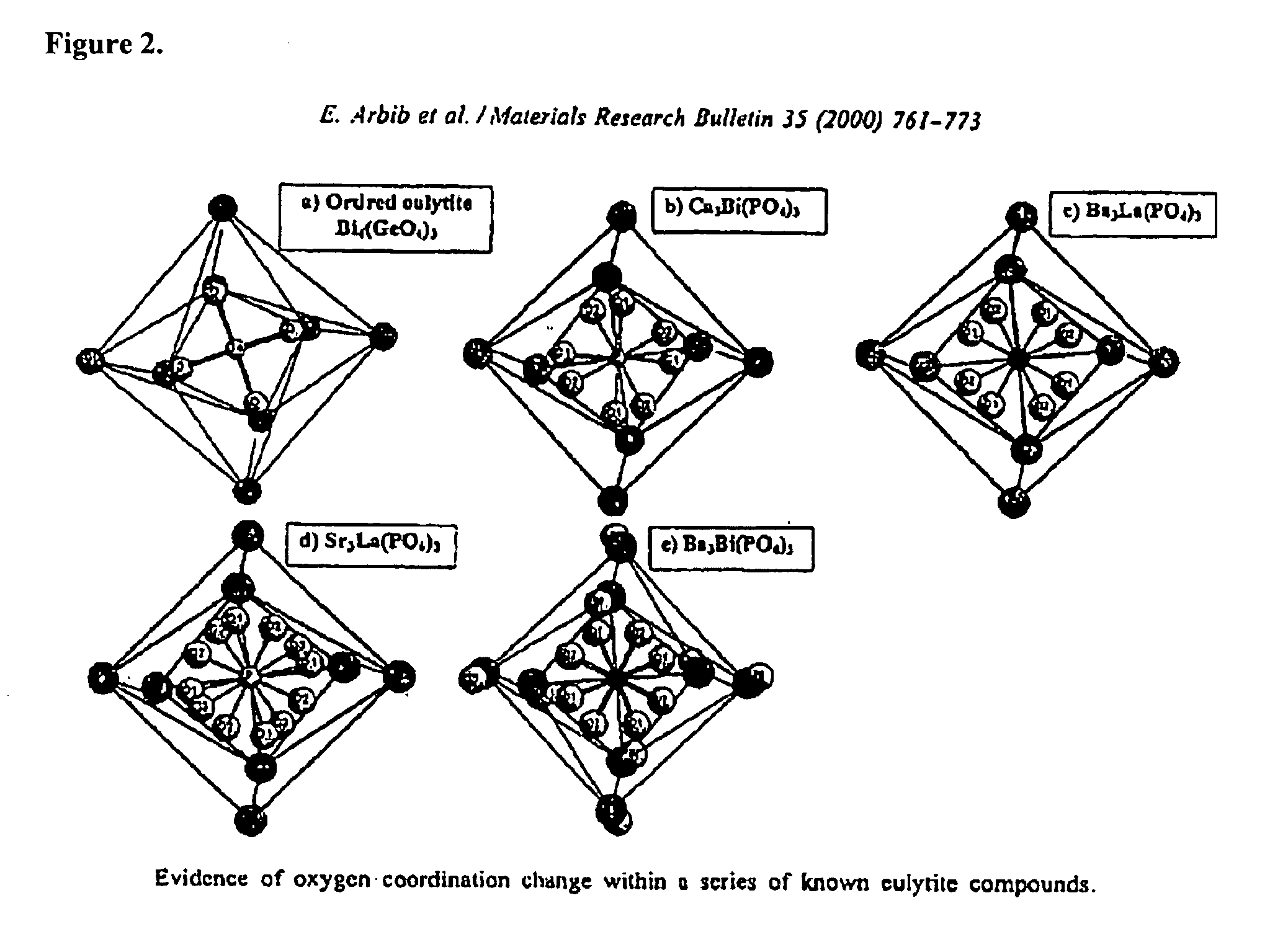Eulytite solid acid electrolytes for electrochemical devices
a technology of solid acid electrolytes and electrolyte, which is applied in the direction of arsenites/arsenates, alkali metal oxides/hydroxides, etc., can solve the problems of irreversible degradation, limited device operation efficiency, and degradation of the conductivity of electrolyte and therefore the efficiency of the fuel cell
- Summary
- Abstract
- Description
- Claims
- Application Information
AI Technical Summary
Problems solved by technology
Method used
Image
Examples
example 1
Preparation of Ba4H(PO4)3
[0121] The compound Ba4H(PO4)3 is synthesized by hydrothermal methods starting with Ba(OH)2 and H3PO4 and H2O mixed in a 4:3:20 mole ratio and 5 g of the mixture placed in a pressure vessel (i.e. thermal bomb) of volume 20 ml. The pressure vessel is then heated up to 250° C. and held there for 48 hrs. The pressure vessel is then cooled and the protonated Ba4H(PO4)3 compound filtered in DI water and dried.
example 2
Preparation of Ba4H(PO4)3
[0122] The compound Ba4H(PO4)3 is synthesized by reacting BaHPO4 and Ba3(PO4)2 together under a pressure of 10 MPa in a sealed platinum ampoule at a temperature of 500° C. The mixture is held at such a temperature and pressure for 24 hrs and then slowly cooled at 5° C. / min to room temperature. The resulting crystals are filtered with DI water and dried.
example 3
Preparation of Ba4H(PO4)3
[0123] The compound Ba4H(PO4)3 is synthesized by reacting a 5 g of a 0.2 M barium acetate solution (buffered with HCl to give a pH of 3) with 60 g of a 0.01 M H3PO4 solution. The mixture of solutions is stirred for 1 hr and let to sit for 48 hrs at room temperature. A barium-phosphate gel forms within the first 5 hrs and then crystallizes over the remaining 43 hrs. The rate of crystallization and overall yield can be increased by increasing the rest temperature of the mixed solution, but the crystallinity of the resulting powder decreases with increasing rest temperature.
PUM
| Property | Measurement | Unit |
|---|---|---|
| temperatures | aaaaa | aaaaa |
| proton conductivity | aaaaa | aaaaa |
| pressure | aaaaa | aaaaa |
Abstract
Description
Claims
Application Information
 Login to View More
Login to View More - R&D
- Intellectual Property
- Life Sciences
- Materials
- Tech Scout
- Unparalleled Data Quality
- Higher Quality Content
- 60% Fewer Hallucinations
Browse by: Latest US Patents, China's latest patents, Technical Efficacy Thesaurus, Application Domain, Technology Topic, Popular Technical Reports.
© 2025 PatSnap. All rights reserved.Legal|Privacy policy|Modern Slavery Act Transparency Statement|Sitemap|About US| Contact US: help@patsnap.com



